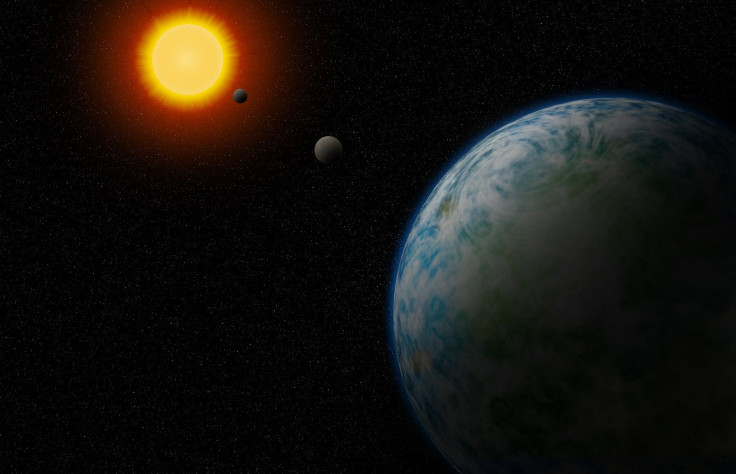Researchers Discover Potentially Habitable 'Super Earths' Orbiting Nearby Stars

KEY POINTS
- Researchers uncovered 16 exoplanets orbiting Red Dwarfs
- GJ180d is a potentially habitable exoplanet that is not tidally locked to its host star
- GJ229Ac is the nearest temperate super Earth orbiting a star with a Brown Star companion
- G433d belongs to a population of unexplored Neptune-like planets
Two potentially habitable super Earths and the coldest Neptune-like planet ever detected to date have been discovered by researchers of a new study, among the several exoplanet candidates they found orbiting Red Dwarf stars.
A team of researchers led by experts from the Carnegie Institution for Science found 16 planet candidates orbiting nine Red Dwarfs. Of the planets, five are new exoplanets, eight still require additional observations to be confirmed, and three were previously reported and are now being confirmed. The study was published in The Astrophysical Journal Supplement Series.
Among the newly discovered exoplanets, perhaps the most interesting are GJ180d and GJ229Ac, two super Earths in the habitable zones of their host Red Dwarf stars that are both among the nearest stars to our Sun. Because Red Dwarfs are cooler and smaller than our Sun, the planets orbiting them can have liquid water on their surface even at much closer orbits compared to the habitable zones of other stars.
This means that GJ180d and GJ229Ac are now added to the list of potentially habitable exoplanets and are excellent candidates for future imaging by the James Webb Space Telescope.
GJ180d and GJ229Ac have masses at least 7.5 to 7.9 times the mass of the Earth, and orbital periods of 106 and 122 days, respectively.
Potentially Habitable
According to lead author Fabo Feng, many of the planets that orbit Red Dwarfs are spinning around their axes at the same period that they orbit their star, much like how the Moon orbits the Earth. This means that one face is always facing the host star so it has a permanent day one on one one side and a permanent night on the other.
What’s interesting is that unlike other typical stars orbiting Red Dwarfs, GJ180d is not tidally locked to its host star so it may possibly have a night-day pattern.
“GJ180d is the nearest temperate super-Earth to us that is not tidally locked to its star, which probably boosts its likelihood of being able to host and sustain life,” Feng said.
Star-Brown Dwarf Binary System
On the other hand, GJ229Ac is rather unique in a different way as it is the nearest temperate super Earth that is in a system where the host star is accompanied by a Brown Dwarf. Brown Dwarfs, also called failed stars, are objects that are too large to be planets but too small to be stars. It is believed that Brown Dwarfs form the same way that stars do but they did not form an object with a dense enough core to trigger nuclear fusion.
The Brown Dwarf in this system is actually one of the first Brown Dwarfs to be imaged. Through the discovery of GJ229Ac, researchers not only discovered another potentially habitable planet but also found one that can help uncover how exoplanets form in star-Brown Dwarf binary systems.
Neptune-Like Planet
The researchers also discovered exoplanet GJ433d, a cold, unexplored Neptune-like planet.
“GJ 433 d is the nearest, widest, and coldest Neptune-like planet ever detected,” Feng explained.
Although it is not considered potentially habitable like GJ180d and GJ229Ac because any water on its surface is likely to be frozen, the researchers note that GJ433d is the first realistic candidate for the direct imaging of cold Neptunes. Studying it would give valuable insights into a currently unexplored population of Neptune-like planets.
Radial Velocity Method
Researchers discovered the new exoplanets using what is called the radial velocity method wherein advanced instruments detect tiny wobbles in the star’s orbit as a result of the star’s gravity and the orbiting planet’s gravity affecting each other. In particular, Red Dwarfs are the primary class of stars around which planets can be discovered using this method because of their lower mass.
“Our discovery adds to the list of planets that can potentially be directly imaged by the next generation of telescopes,” Feng said. “Ultimately, we are working toward the goal of being able to determine if planets orbiting nearby stars host life.”
© Copyright IBTimes 2024. All rights reserved.





















